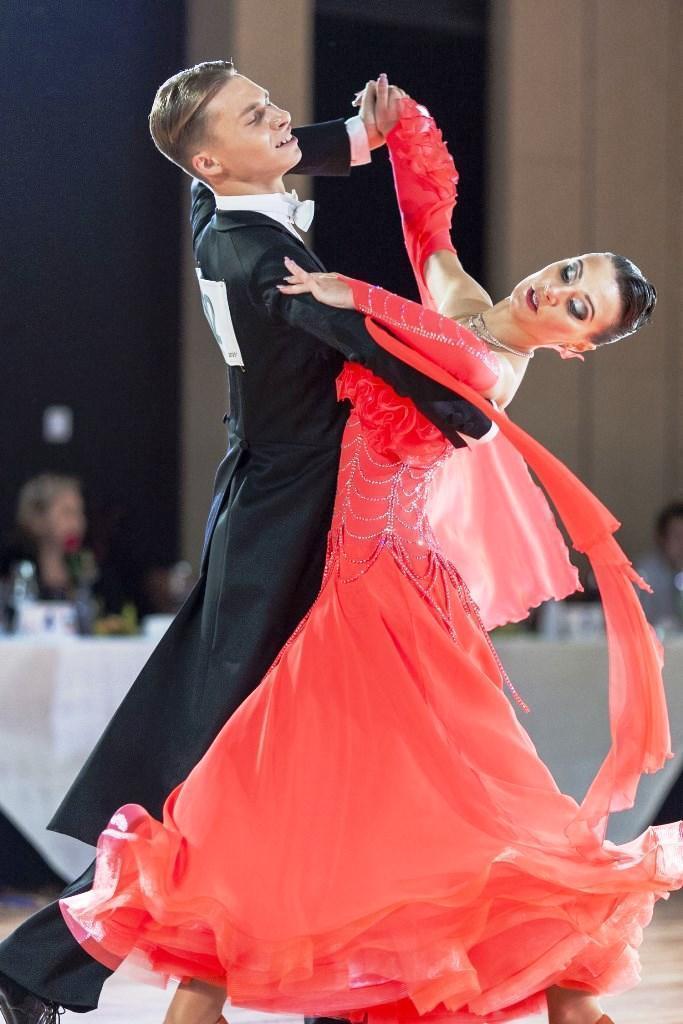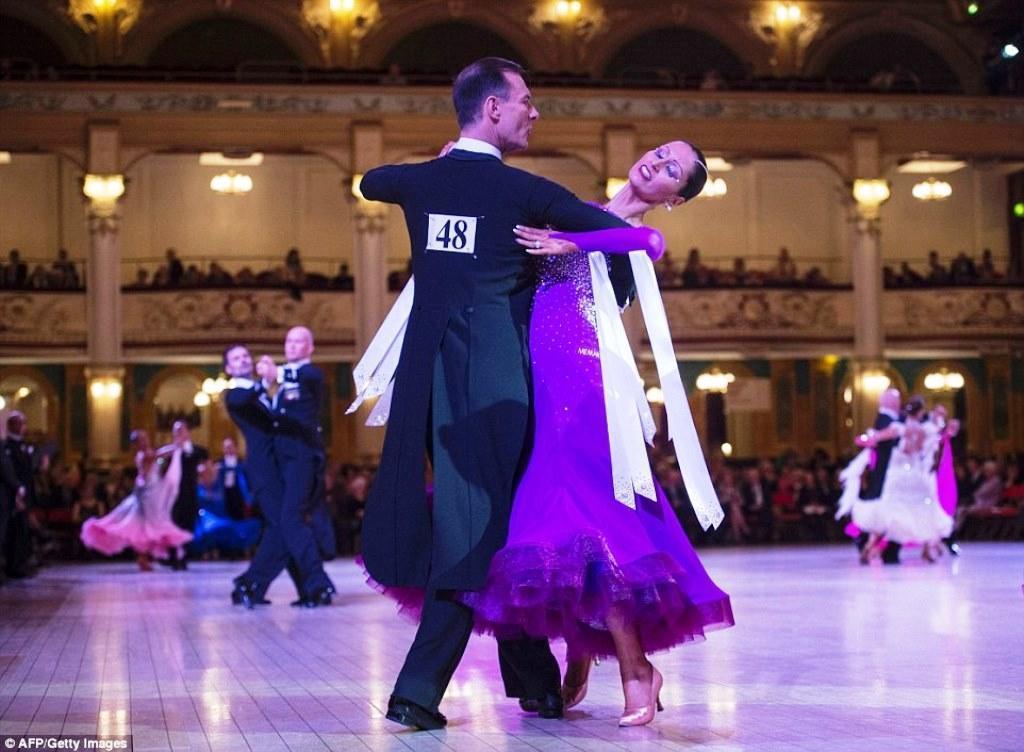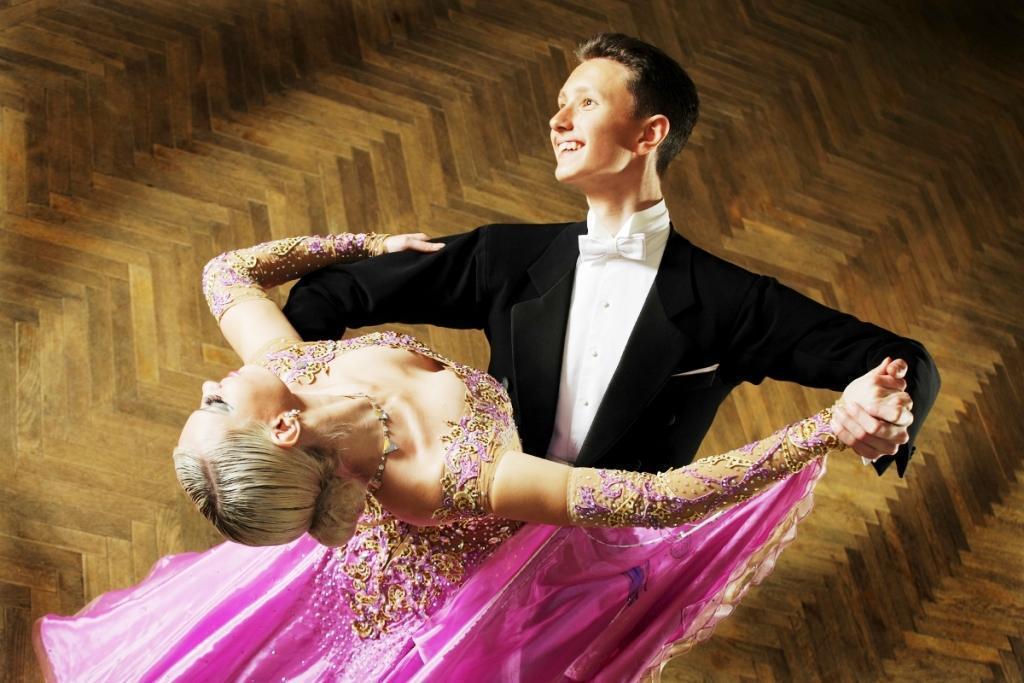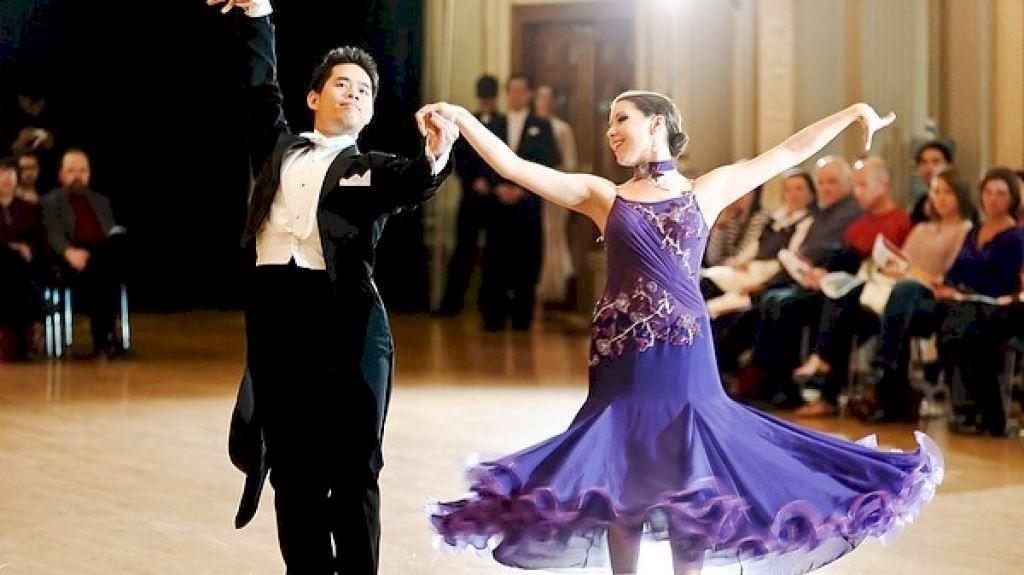
1. Introduction to the UK’s Most Popular Ballroom Dances
Introduction to the UK’s Most Popular Ballroom Dances
The UK has a rich history of ballroom dancing, with many different styles and dances having evolved over the years. From the classic Waltz and Foxtrot to the more modern Quickstep and Latin dances, there is something for everyone to enjoy.
Traditional Ballroom Dances
The Waltz is one of the oldest and most popular ballroom dances, originating in Austria in the late 18th century. It is a smooth, graceful dance which involves couples taking three steps to every bar of music. The Foxtrot is another traditional ballroom dance, which was first popularised in the early 20th century. It is characterised by its smooth, gliding steps and is often considered to be the most elegant of all the ballroom dances.
Latin American Dances
The Cha Cha, Rumba, Samba, Paso Doble and Jive are all Latin American dances which are now extremely popular in the UK. The Cha Cha is a lively, upbeat dance which involves couples taking three steps to every bar of music. The Rumba is a slower, more romantic dance, and is characterised by its sensual, rhythmic movements. The Samba is a fast-paced dance with a Latin beat, and the Paso Doble is a dramatic, passionate dance which is often seen in competitive ballroom events. Finally, the Jive is a lively, upbeat dance which originated in the United States in the 1940s.
These five Latin American dances are all extremely popular in the UK, and are often seen as the most exciting and energetic of all the ballroom dances.
2. History of Ballroom Dancing in the UK
History of Ballroom Dancing in the UK
The history of ballroom dancing in the UK stretches back centuries, and has been a popular form of entertainment and leisure activity for many generations.
Early Beginnings
The earliest known ballroom dancing in Britain dates back to the 16th century, when the court of King Henry VIII was known to have held lavish balls and other social events. During this time, the art of courtly dancing was popular among the upper classes, and the dances of the period were often intricate and complex.
The Victorian Era
The 19th century saw a resurgence of ballroom dancing in Britain, as the Victorian era ushered in a new era of social etiquette and formality. During this period, the traditional English country dances were replaced by the more formal and structured ballroom dances which we know today. Popular dances of the time included the Waltz, the Polka, and the Quadrille.
The 20th Century
In the early 20th century, ballroom dancing in the UK became increasingly popular, and the dances of the time were heavily influenced by the music of the period. Popular dances of the era included the Foxtrot, the Quickstep, and the Charleston.
In the mid-20th century, ballroom dancing in the UK saw a decline in popularity, but in the late 1980s the dance scene experienced a resurgence. This was due in part to the success of the television show ‘Strictly Come Dancing’, which reignited the public’s interest in the art of ballroom dancing.
Today, ballroom dancing in the UK is as popular as ever, with a wide range of styles and dances being enjoyed by both professional and amateur dancers. Popular dances of the modern era include the Rumba, the Tango, and the Jive.
3. Popular Ballroom Dances of the UK
The UK’s Most Popular Ballroom Dances
3. Popular Ballroom Dances of the UK
The UK is home to a variety of popular ballroom dances, each of which has its own unique style and flair. Here are some of the most popular ballroom dances of the UK:
The Waltz
The Waltz is a traditional ballroom dance that has been popular in the UK for centuries. It is a graceful, elegant dance that is characterized by its slow, flowing movements. The Waltz is usually danced in a closed position, with the partners facing each other.
The Foxtrot
The Foxtrot is a classic ballroom dance that originated in the United States. It is a smooth, gliding dance that is characterized by its quick, light steps. The Foxtrot is often danced in a closed position, though it can also be danced in an open position.
The Quickstep
The Quickstep is a fast-paced dance that combines elements of the Foxtrot and the Waltz. It is characterized by its quick, intricate steps and its lively energy. The Quickstep is usually danced in an open position, with the partners facing each other.
The Tango
The Tango is an intense, passionate dance that originated in Argentina. It is characterized by its staccato steps and its dramatic pauses. The Tango is usually danced in a closed position, with the partners facing each other.
The Jive
The Jive is a lively, upbeat dance that originated in the United States. It is characterized by its fast-paced steps and its energetic energy. The Jive is usually danced in an open position, with the partners facing each other.
4. The Waltz
The Waltz
The Waltz is a graceful and romantic ballroom dance, and has been popular in the UK since the early 19th century. It is a slow, gliding dance in 3/4 time, and is traditionally performed to classical music.
The Waltz is a smooth, progressive dance, in which couples move around the dance floor in an oval pattern, taking three steps for every bar of music. The man leads, and the woman follows.
The Waltz Steps
The basic steps of the Waltz are very simple. The man takes a step forward on his left foot, then brings his right foot up to meet it. He then takes a step backward on his left foot, and then brings his right foot up to meet it.
The woman follows the same pattern, but in the opposite direction. She steps backward on her right foot, then brings her left foot up to meet it. She then steps forward on her right foot, and brings her left foot up to meet it.
The Waltz Variations
Once the basic steps have been mastered, couples can add variations to their Waltz routine. These can include twirls, turns, and other figures.
The Waltz is a beautiful and elegant dance, and has been popular in the UK for centuries. It is a great way to express oneself in a romantic and graceful way.
5. The Quickstep
The Quickstep
The Quickstep is a fast-paced, lively dance that is popular in the UK. It is a combination of two dances, the Foxtrot and the Charleston, and is danced to upbeat music. It is characterised by quick, sharp movements and has a distinctive, bouncy feel.
History of the Quickstep
The Quickstep was first developed in the 1920s and has since become one of the most popular ballroom dances in the UK. It is a descendant of the Foxtrot and the Charleston, and has elements of both dances in its steps and movements.
Steps of the Quickstep
The Quickstep is a fast-paced dance that requires quick feet and sharp movements. The basic steps are a quick step forward and a quick step back, followed by a chasse to the side and a lock step. Other steps include the natural turn, the reverse turn, and the double reverse spin.
Music for the Quickstep
The Quickstep is usually danced to upbeat music with a tempo of around 50-60 beats per minute. Popular music for the Quickstep includes jazz, swing, and Big Band music.
Competitions and Events
The Quickstep is a popular dance in the UK and is often seen in competitions and events. The British Open and the UK Open are two of the most prestigious competitions for the Quickstep. There are also many local competitions and events around the UK.
6. The Foxtrot
The Foxtrot
The Foxtrot is a graceful and elegant dance that originated in the early 20th century. It is a smooth dance that is danced in 4/4 time and is one of the most popular ballroom dances in the UK.
The Foxtrot is a combination of walking steps, side steps, and chasses. It is characterized by its long, continuous flowing movements across the dance floor. The Foxtrot is danced in a closed position, with the partners facing each other and with the man’s left hand holding the lady’s right hand.
History of the Foxtrot
The Foxtrot was first developed by vaudeville performer Harry Fox in 1914. He was inspired by the ragtime music of the time and wanted to create a dance that would reflect the music. The Foxtrot quickly became popular in the ballroom and has remained so ever since.
Foxtrot Variations
Over the years, the Foxtrot has evolved and there are now many different variations of the dance. These include the International Foxtrot, the Quickstep, the Slow Foxtrot, and the American Foxtrot.
Foxtrot Music
The Foxtrot is usually danced to a range of music, including jazz, big band, swing, and even pop. Popular Foxtrot songs include Frank Sinatra’s ‘Fly Me to the Moon’, ‘Cheek to Cheek’ by Fred Astaire and Ginger Rogers, and ‘I’m Beginning to See the Light’ by Duke Ellington.
Foxtrot Etiquette
The Foxtrot is a formal dance and it is important to adhere to the etiquette of the dance. This includes maintaining proper posture, being aware of other dancers on the floor, and avoiding any sharp or jerky movements.
The Foxtrot in the UK
The Foxtrot is one of the most popular ballroom dances in the UK. It is often danced in competitions and is a popular choice for social dances. It is also a great way to meet new people and have fun on the dance floor.
7. The Tango
The Tango
The Tango is a passionate and dramatic dance that originated in Buenos Aires, Argentina. It is a very popular dance in the UK and is renowned for its intricate footwork and dramatic moves.
History
The Tango has its roots in the late 19th century. It was developed by the lower classes of Buenos Aires and Montevideo, Uruguay, and was heavily influenced by the African and European cultures present in the area. It was first seen in Europe in the early 20th century, and has since become a popular dance across the world.
Style
The Tango is a very passionate and dramatic dance. It is usually danced in a closed hold, with the couple facing each other. The dance has a strong emphasis on the footwork, and the couple often move in intricate patterns around the floor.
Music
The music of the Tango is usually in a 4/4 time signature, and is characterised by its syncopated rhythms and passionate melodies. Popular Tango music includes ‘La Cumparsita’ and ‘Por Una Cabeza’.
Competition
The Tango is a popular dance in ballroom competitions, and is often seen in the ‘Latin’ section. It is a very challenging dance, as it requires the couple to move in intricate patterns with perfect timing and synchronization.
Learning to Dance
The Tango is a challenging dance to learn, and it is recommended that those wishing to learn the dance take lessons from a qualified instructor. The dance is usually taught in a step-by-step format, with the focus being on learning the correct footwork and technique.
8. The Viennese Waltz
The Viennese Waltz
The Viennese Waltz is a classic ballroom dance that originated in Vienna, Austria in the early 19th century. It is a fast-paced, sophisticated dance that is characterized by its continuous spinning movements. The Viennese Waltz is danced in 3/4 time and is usually the first dance taught to beginners.
Characteristics
The Viennese Waltz is a rotary dance, meaning it is danced in a continuous circular motion, with the couple turning around each other. The Viennese Waltz is a very fast dance, with the tempo usually ranging from 58 to 60 beats per minute. It is danced in closed position, with the man and lady facing each other and their arms around each other.
Steps
The basic steps of the Viennese Waltz involve taking three steps for every bar of music. The steps are taken in a continuous circular motion, with the man and lady turning around each other. The steps are taken on the “quick” of the music, and the “quick” is usually two beats of music.
Music
The Viennese Waltz is usually danced to classical music, such as Strauss’ waltzes. However, modern music can also be used, such as pop, rock, and country.
Competition
The Viennese Waltz is a popular dance for competitions, and is often used in international competitions. It is usually the first dance in a competition, and is used to set the tone for the rest of the competition.
Social Dancing
The Viennese Waltz is also a popular dance for social events, such as weddings, parties, and dances. It is a great way to show off your ballroom dancing skills and have a great time with your partner.
9. The Samba
The Samba
The Samba is a popular Latin dance that originated in Brazil. It is a lively and rhythmic dance, which is characterized by its upbeat music and intricate footwork. The Samba is often danced in pairs, although it can also be danced solo.
History of the Samba
The Samba is believed to have originated in Brazil in the late 19th century. It is thought to have been influenced by African, European and Indigenous Brazilian cultures, and it quickly spread throughout South America. During the 20th century, the Samba became popular in Britain, and it is now one of the most popular ballroom dances in the UK.
Steps of the Samba
The Samba is a dance which involves a lot of footwork. The basic steps involve a series of side steps, heel turns and chasses. The steps are usually done in a syncopated rhythm, and the dance is often accompanied by clapping and singing.
Music for the Samba
The Samba is usually danced to upbeat Latin music, such as samba, bossa nova, and salsa. It is important to choose music that is suitable for the dance, as the rhythm and tempo of the music will determine the speed and complexity of the steps.
Attire for the Samba
When dancing the Samba, it is important to wear clothing that is comfortable and allows for a full range of movement. Traditional Samba costumes usually feature bright colours and lots of sparkles, and are often quite revealing.
Competitions
The Samba is a popular dance at ballroom competitions. It is usually judged on technique, musicality, and presentation. Competitors must be able to demonstrate the correct steps and perform them with energy and enthusiasm in order to score well.
Conclusion
The Samba is a fun and energetic Latin dance that is popular in the UK. It is characterized by its upbeat music and intricate footwork, and it is usually danced in pairs. The Samba is often performed at competitions, and it is important to choose the right music and attire in order to do well.
10. The Jive
The Jive
The jive is a fast-paced and lively dance that originated in the United States in the 1940s. It is considered to be a form of swing dance and is a very popular dance in the UK.
Steps
The basic steps of the jive involve a triple step, followed by a kick, and then a triple step again. The steps are done in a quick and energetic manner, and the arms are used to give the dance more of a swing.
Music
The jive is usually performed to upbeat music, such as rock and roll or swing. It is also often danced to Latin music, such as salsa or merengue.
Costumes
The costumes worn for jive dancing are usually quite bright and colourful, and often involve sequins and frills. The most popular outfit for jive dancing in the UK is a two-piece costume, with a top and skirt.
Competition
The jive is one of the most popular dances in the UK for ballroom dancing competitions. Competitions are held throughout the year, and the winners are usually those who can perform the steps with the most energy and flair.
Tips
If you are just starting out in jive dancing, it is important to keep your arms and legs moving. It is also important to keep your body relaxed and to focus on the rhythm and timing of the music. Finally, practice makes perfect, so try to practice as much as you can.
11. Benefits of Ballroom Dancing
Benefits of Ballroom Dancing
1. Improved Physical Health
Ballroom dancing is a great way to stay physically active and improve your overall health. Regular ballroom dancing can help to improve your posture, balance, flexibility, and strength. It can also help to reduce stress and improve your cardiovascular fitness.
2. Improved Mental Health
Ballroom dancing can also help to improve your mental health. It can help to reduce anxiety and depression, as well as improve your self-esteem. It can also help to relax your mind and body, and improve your concentration.
3. Improved Social Skills
Ballroom dancing can help to improve your social skills. It can help to increase your confidence and help you to make new friends. It can also help to improve your communication skills, and help you to develop better relationships with others.
4. Improved Cognitive Skills
Ballroom dancing can help to improve your cognitive skills, such as memory, problem-solving, and decision-making. It can also help to improve your coordination and reaction time.
5. Improved Coordination
Ballroom dancing can help to improve your coordination and balance. It can help to increase your agility and reflexes, as well as help you to develop better muscle control.
6. Improved Creativity
Ballroom dancing can help to improve your creativity. It can help to increase your imagination and help you to think outside the box.
7. Improved Stress Relief
Ballroom dancing can help to reduce stress and improve your overall wellbeing. It can help to relax your mind and body, and help to boost your mood.
8. Improved Self-Expression
Ballroom dancing can help to improve your self-expression. It can help to increase your confidence and help you to express yourself better.
9. Improved Memory
Ballroom dancing can help to improve your memory and recall. It can help to improve your ability to remember steps and patterns, and help you to remember more quickly.
10. Improved Confidence
Ballroom dancing can help to increase your confidence and help you to feel more comfortable in social situations. It can also help to boost your self-esteem and help you to feel more confident in yourself.
11. Improved Balance
Ballroom dancing can help to improve your balance and coordination. It can help to increase your agility and help you to have better control over your body.
12. Conclusion
Conclusion
Ballroom dancing is an art form that has been around for centuries, and it is still popular today. It is a great way to get active and socialise, and there are a variety of different dances to choose from. The UK’s most popular ballroom dances are the Waltz, Foxtrot, Quickstep, Tango, and Viennese Waltz. Each dance has its own unique style and is enjoyed by people of all ages. Whether you are a beginner or an experienced dancer, there is something for everyone to enjoy.
So Get Out There and Dance!
So why not give ballroom dancing a try? If you’re looking for a fun and active way to spend your time, this could be the perfect option for you. With a variety of different dances to choose from, you’ll be sure to find something that you love. So grab a partner and get out there and start dancing!




